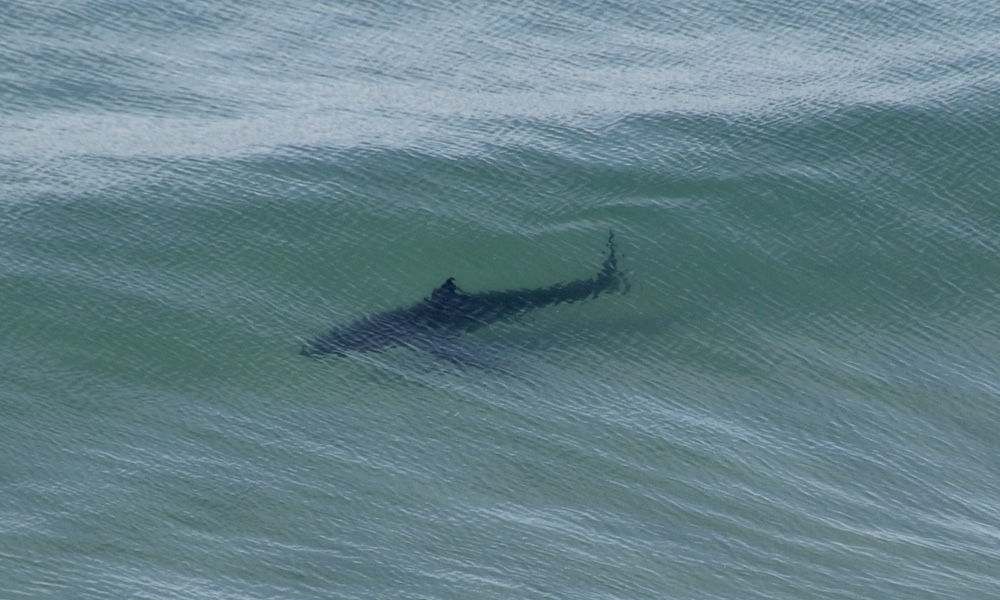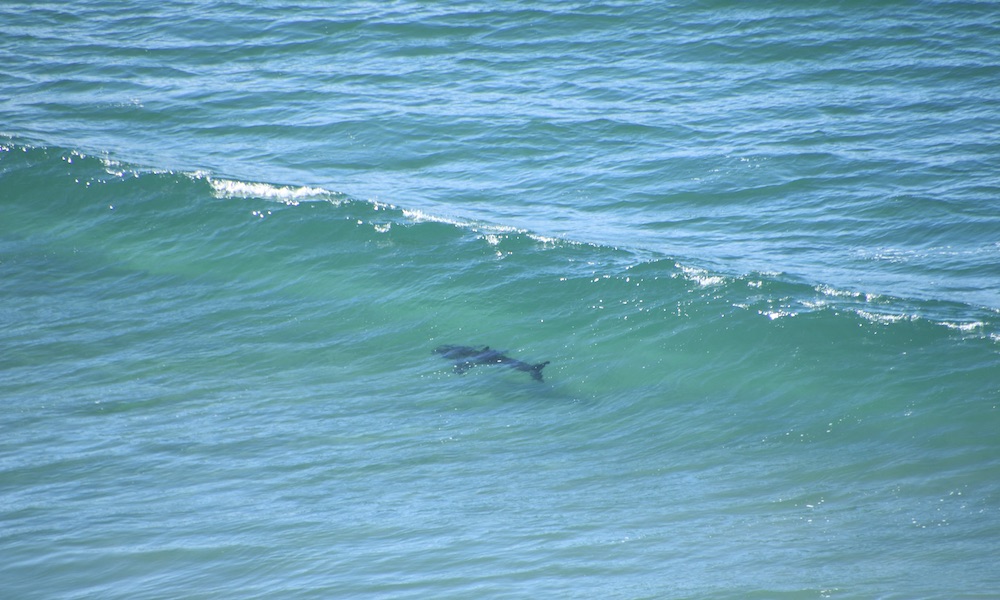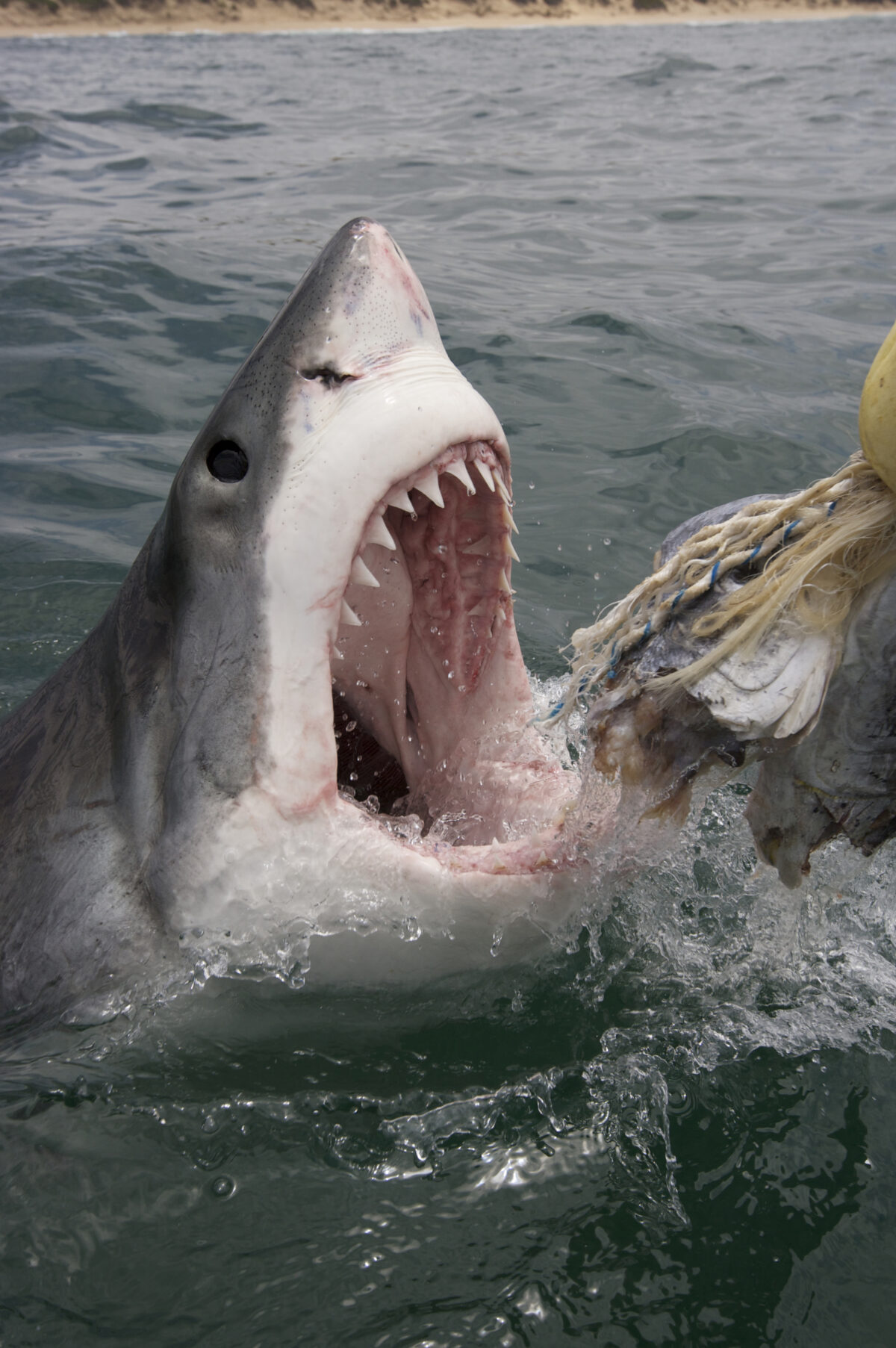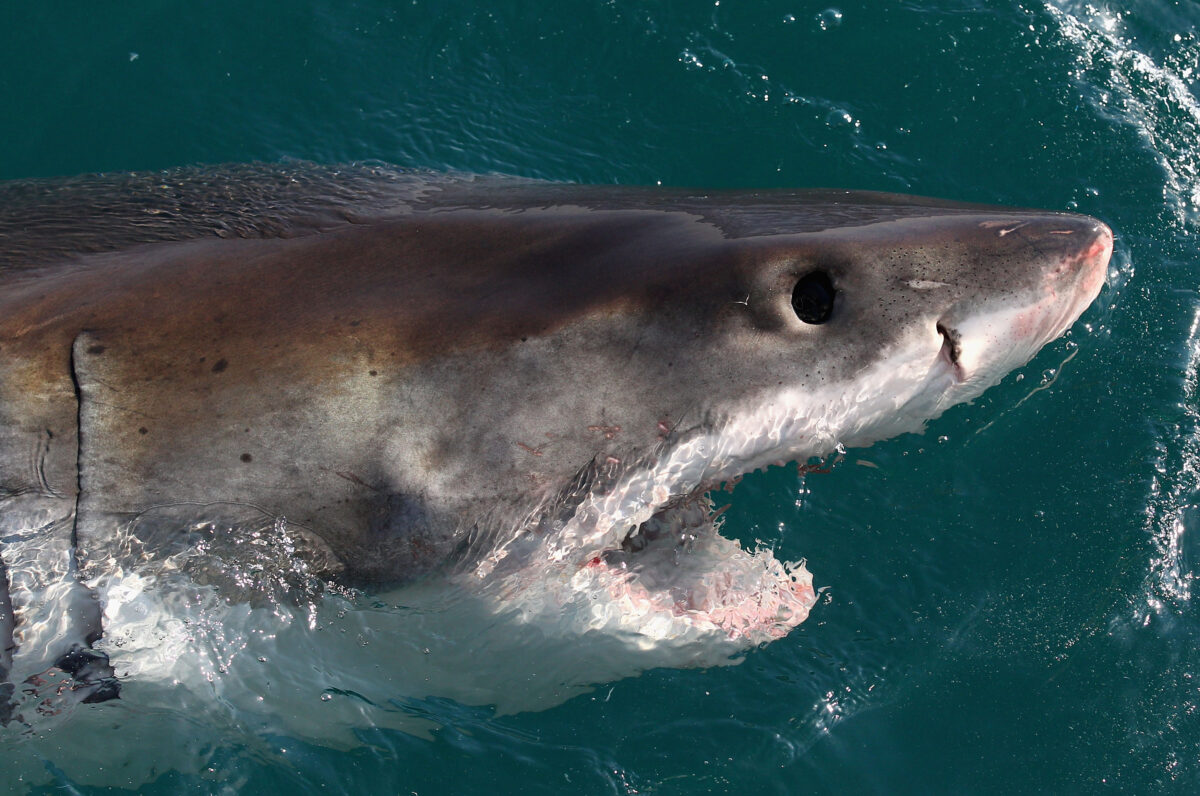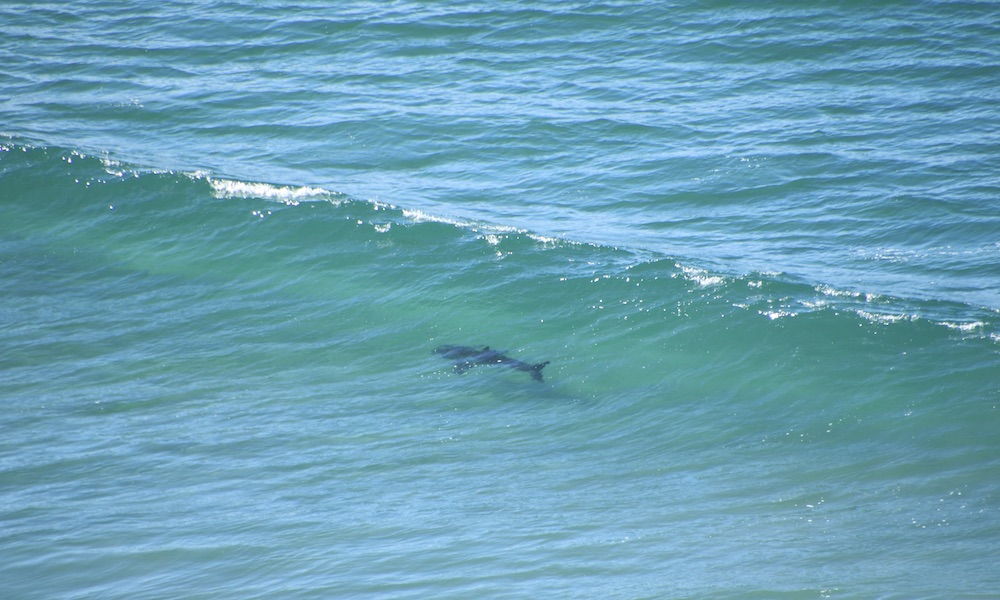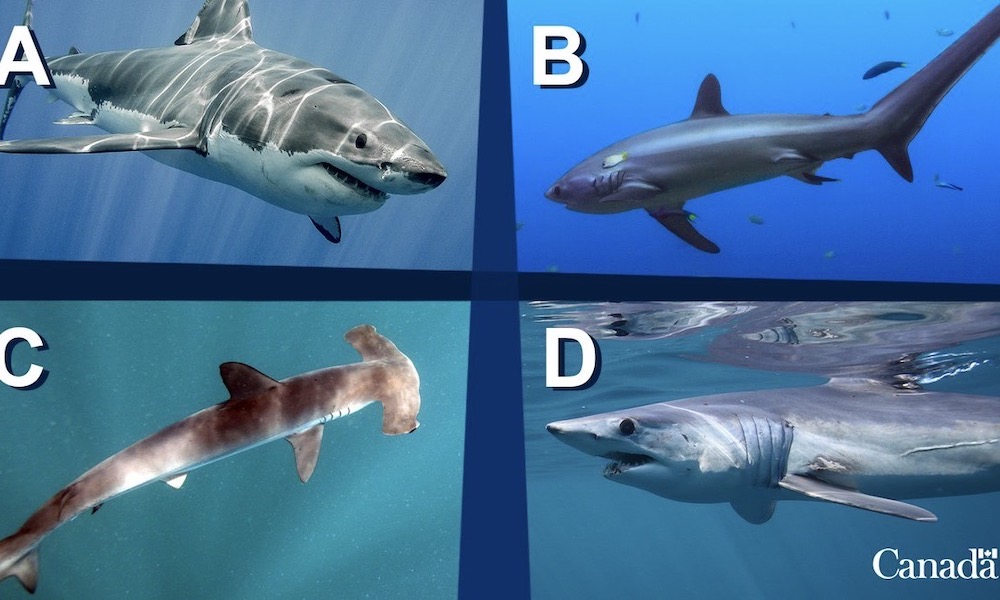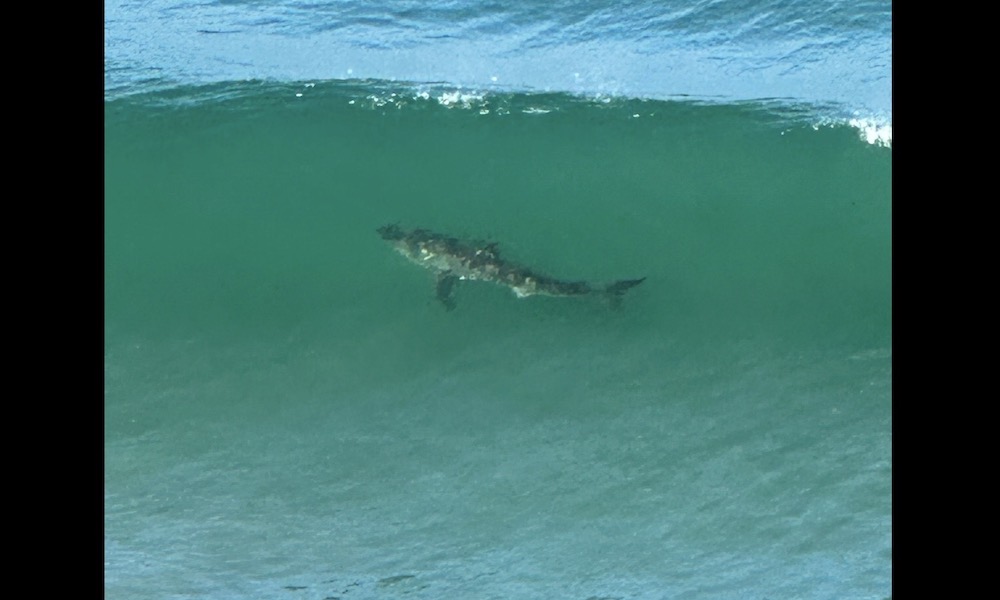A roughly 10-mile stretch of coastal waters off San Diego continues to be utilized as a nursery by juvenile great white sharks, which sometimes appear in waves.
The junior apex predators, measuring to about nine feet, can be spotted from bluff-top trails at Torrey Pines State Natural Reserve.
I captured the accompanying images during visits as recently as Dec. 20, usually before noon (with the sun at my back) while wearing polarized sunglasses for easier spotting.

Some of the sharks I observed swam close to shore as they searched (presumably) for rays and other fish. Some were beyond the surf, cruising parallel to the coast in either direction.
The stretch between Del Mar and La Jolla is a major aggregation site for young white sharks – a productive feeding zone in a reasonably safe and tranquil environment.

Many of the sharks are tagged. Chris Lowe, director of the of the Shark Lab at Cal State University Long Beach, told me recently that there could be as many as 40 sharks utilizing the area.
Torrey Pines State Natural Reserve does not routinely publicize the presence of sharks. But regular visitors know about them, and children on field trips are sometimes asked by naturalists to try to spot them.

The sharks can be spotted from trails and overlooks nearest the water. Mornings are best because the ocean is generally calm and the sun is at a proper angle. Binoculars and polarized glasses are extremely helpful.
My best sightings occurred at medium or high tide, when sharks seem more likely to approach the shore. But on Wednesday during a medium low tide I spotted one shark well inside the breaking waves (photo posted above).

Will the sharks stay for the winter?
Lowe told me in October 2022 that larger sharks were likely to hold over, while smaller sharks might leave if the water temperature dipped into the 50s.
For now, the aggregation appears to be holding steady but nobody knows how long it’ll last. Major aggregation sites are temporary and have formed and dissipated at other locations.

What’s unique about Torrey Pines is a trail network that affords a bird’s-eye view. All you need are suitable viewing conditions and patience.
If you’re fortunate enough to be visiting on a calm morning with any kind of swell, you might spot a shark or two swimming in waves.
